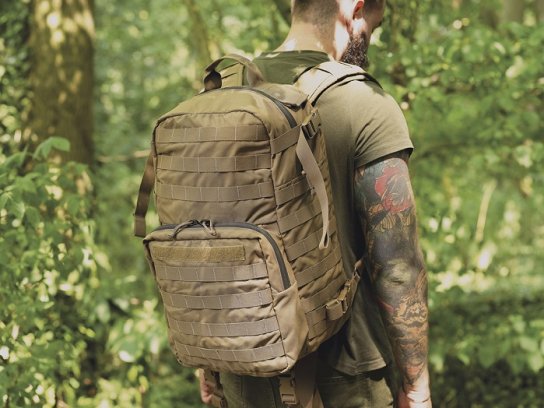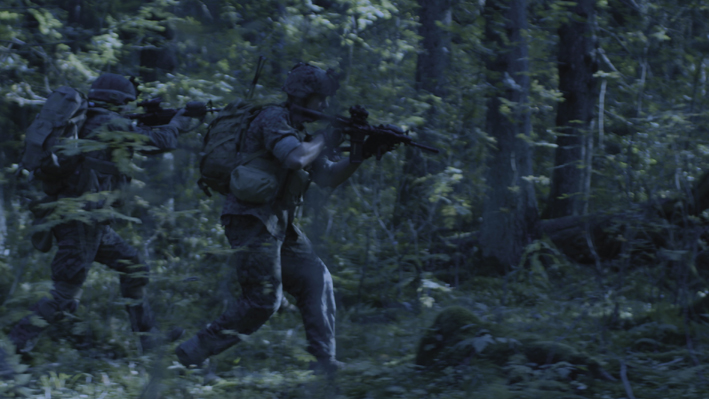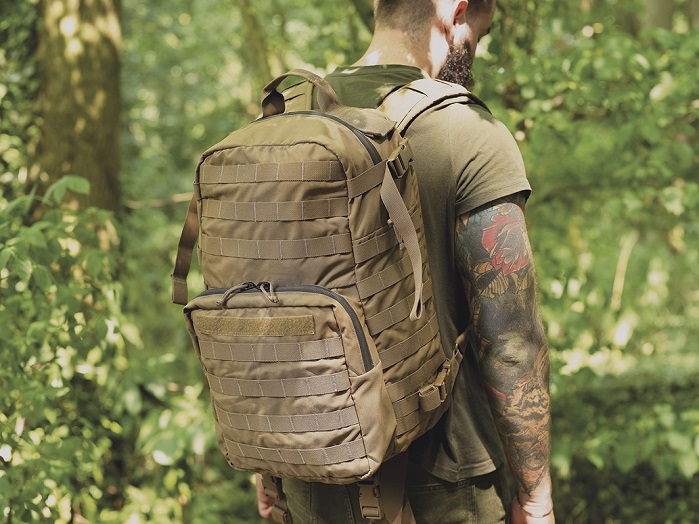
Happy trails for half a century
At the Future Forces exhibition, Invista’s Cordura brand introduced a cutting-edge new technology for military uniforms and equipment.

14th November 2018
Innovation in Textiles
|
Prague
At the Future Forces exhibition which took place in Prague, Czech Republic, from October 17-19, Invista’s Cordura brand introduced a cutting-edge new technology for military uniforms and equipment.
Given the increasing sophistication of night vision surveillance – not to mention its ready availability over the internet – much thought has had to be given to developing adequate camouflage by military and tactical planners for night time stealth operations.

“Ideally, uniforms need to combine a daylight visible reflectance match with a low level of infrared reflectance which is hard to achieve via conventional textile processing methods,” explains Allen W. Mortimer, North American business manager for the Cordura brand.
Cordura’s parent company Invista, however, has developed two routes to achieving tailored levels of matching infrared reflectance in fabrics to a background theatre via its expertise in extrusion-based nanotechnology.
“What we do in melt spinning is a little like mixing paint at the hardware store for custom IR formulations,” says Mortimer. “The US military initially came to us around ten years ago looking for a solution for a solid colour fabric used in a desert environment. It was a light shade colour with both a high visible and infrared reflectance. We subsequently developed two options for achieving lower infrared reflectance with matching visible background theatre reflectance. Using our patented Cordura TrueLock EP (enhanced polymer) fibre technology, we put the IR pigment directly into the polymer during the melt stage, for use in piece dyed and/or solution dyed fabrics.”
Both solutions work with any fabric containing a percentage of Invista nylon 6,6 fibre. This includes uniform fabrics made with nylon staple fibres blended with cotton as well FR blends containing nylon staple fibre as a minority component for enhanced durability. It also would include 100% Cordura filament fabrics most often used for ballistic vests, load carriage and boots. Nylon in uniforms and equipment load carriage is essential for providing the necessary abrasion resistance and durability needed for military or tactical operations.
Untreated nylon can be highly IR reflective, up to 90 percent in the Near Infrared spectrum. Cordura TrueLock EP fibre technology can be customized to reduce the IR to significantly lower levels and optimized to match the natural background theatre reflectance. “This is how you conceal in night time operations without sacrificing camouflage effectiveness under daylight visible conditions” says Mortimer.
While both solutions work with solid colours and printed patterns, Cordura TrueLock EP fibre technology is most effective for printed camouflage fabrics with multiple colours with different required IR reflectance targets.

One potential environmental advantage of using Cordura TrueLock EP fibre technology is the opportunity to reduce the use of specialized dyestuffs or after-treatments which may contain environmentally sensitive metallized compounds used to reduce the IR reflectance.
“The important thing to stress is that the technology is inherent to the fibre and the fabrics resist fading both in the visible and the IR spectrum,” Mortimer explains. “Other solutions based on topical or after-treatments can tend to darken the shade of the fabric as well as the effect is not as permanent and the same problem in achieving dye uniformity lot to lot exists as with some piece dyed fabrics.”
Another big advantage, he adds, is that the technology has been extended to webbings and seam tapes, so the fabrics can be employed in back packs and ballistic vests to ensure colour uniformity across all substrates for a uniform visible match item to item. “Fabric mills can also weave weft-only constructions for rapid and economical formulations and scaleups to meet individual solid colour or print pattern specifications.”
Invista has recently boosted its capability for the production of air textured, speciality nylon 6,6 filament fibres at its Camden plant in South Carolina and intends to introduce a wide range of fibres with embedded functionality, such as its recently-launched Cordura TrueLock fibre platform including an all new ‘Wolf Gray’ colour.
Cordura TrueLock fibre is created from Invista nylon 6,6 multi-filament fibre that is solution dyed, locking the colour in at the molten polymer extrusion level to create deep, durable colour throughout the entire fibre structure. The process of colour encapsulation used in Cordura TrueLock fibre offers several environmental benefits such as reduced water and energy consumption as well less CO2 emission in the manufacturing process*. The fibre also delivers additional tangible benefits, including abrasion resistant colour, UV and IR fade resistant colour, colour that doesn’t bleed or crock, lot-to-lot colour consistency/uniformity, colour consistency across different textile substrates/components and the option for fibre with inherent Near-Infrared (NIR) capability.
The focus for Cordura TrueLock EP fibre technology meanwhile, has primarily been with the US military. “In Europe, every nation has its own colours and patterns,” Mortimer concludes, “but nevertheless, we hope to introduce the product to European mills in the coming months, and will be pleased to discuss the development further at Future Forces in Prague later this month.”
* 2013 LCA study based on the average comparison of conventional level acid Piece Dyeing to SDN at 3 independent/3rd party dyeing and finishing mills

Business intelligence for the fibre, textiles and apparel industries: technologies, innovations, markets, investments, trade policy, sourcing, strategy...
Find out more